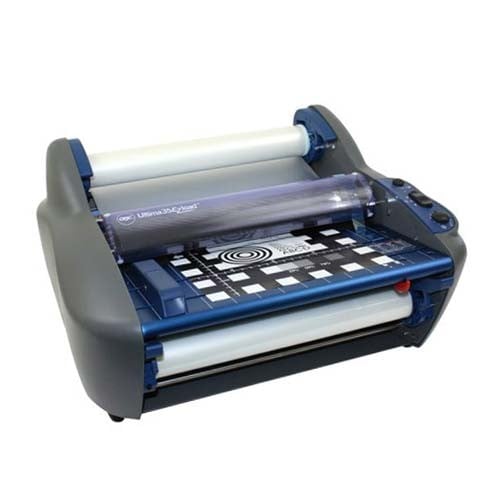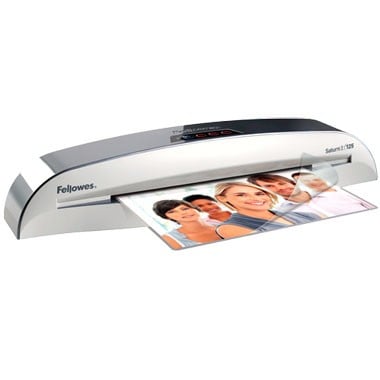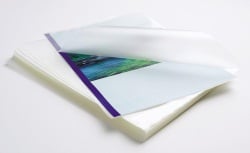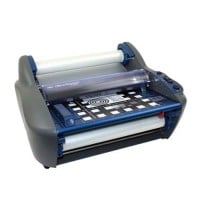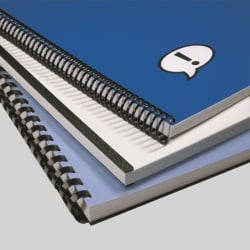MyBinding Knowledge Base
- Binding (248 Article)
- General Binding (42)
- Plastic Comb Binding (57)
- Fastback Binding (59)
- Perfect Binding (2)
- Modular Punching (8)
- Zipbind (3)
- Twin Loop Wire (13)
- Coil Binding (22)
- Thermal Binding (14)
- Strip Binding (1)
- VeloBind (4)
- Binding Covers (14)
- Proclick Binding (10)
- SureBind (4)
- Screw Post (2)
- Hole Punches (2)
- Staplers (4)
- Komtrak Insprial Binding (2)
- Paper (1)
- Rhin-O-Tuff (5)
- Binding Machines Comparison (17)
- Laminating (109 Article)
- General Laminating (26)
- Roll Lamination (16)
- Pouch Lamination (36)
- Pouch Board Laminator (3)
- School Laminator (3)
- Foil Laminating (3)
- Royal Sovereign Laminators (10)
- Laminators Comparison (3)
- Boards (11 Article)
- Bulletin Boards (3)
- Whiteboards (5)
- Chalkboards (1)
- Paper Shredders (44 Article)
- General Shredding (35)
- Industrial Shredders (1)
- Cross-Cut Shredders (2)
- Cardboard Shredders (1)
- Multimedia Shredders (1)
- Personal Shredders (1)
- High Security Shredders (2)
- Ring Binders (9 Article)
- Specialty Binders (2)
- Reinforced Paper (1)
- Health Care Punched Paper (1)
- Perforated Paper (2)
- View Binders (1)
- Index Tabs (9 Article)
- Index Tab Dividers (2)
- Copier Tabs (4)
- Pocket Folders (1)
- Custom Index Tabs (1)
- Pre-Printed Index Tabs (1)
- Paper Handling (37 Article)
- Paper Folders (9)
- Paper Joggers (2)
- Guillotine Cutters (4)
- Rotary Trimmer (3)
- Electronic Paper Cutters (1)
- Corner Rounders (2)
- Paper Scoring (2)
- Paper Drill (2)
- Booklet Makers (3)
- Stack Cutters (1)
- Paper Handling Equipment Comparison (5)
- ID Accessories (12 Article)
- Badge Holder (1)
- Lanyards (8)
- Badge Reels (1)
receive
$5off
*On order $25 or more.
How to Do One Sided Lamination
There are two main ways to do one sided lamination. Both have different benefits that I will explain as we go through the process.
The first way to laminate only one side of your project is to replace the bottom roll with kraft paper. To use this method the roll of paper must meat some requirements to work with your machine. First it must have the same core size--many laminators have a 1 inch core, up to a 3 inch core. It should also fit within your laminator, and be slightly wider than your choice of film on the top roll. The kraft paper is there to ensure no adhesive gets onto the heat rolls of your laminator. So if your top lamination film is wider than the bottom paper, then you end up with a big sticky mess.
The kraft paper route is easier to manage, only inserting one project at a time. This method also allows you to laminate multiple projects that are different sizes, allowing for the most variations.
The second way is to use two lamination rolls. This method can potentially be twice as fast, but can also be more problematic. This is most convenient when you already have a laminator with two rolls of film already loaded on the machine. Instead of using the kraft paper, you can use another project of the same size! But I will stress that your projects have to be the exact same size, put back to back, then inserted into the laminator. If either project shifts at all, then you are going to run into more problems. When the two projects are not aligned, then it exposes the back of the projects to be laminated--and since we are doing one sided lamination this is bad because now a small part of the projects are laminated on the back. This also means that if you have many different sizes, this method won't work very well.
It may also be more challenging with wider laminators because you have to continually align your projects back to back and make sure they don't shift, which takes more time. With a larger laminator, as it runs and you are taking the extra time to align projects, you're wasting a lot more film. This is less of a problem when your laminator can only fit one project at a time.
Another work around is to put scrap paper under your projects. This is more wasteful, but when you don't have any other choice(like if you work in a school and several other people use the laminator), it's a great work around to get a one sided project.
In all situations, you'll need to trim your projects to size(whether it is a one sided, or two sided lamination). We recommend a guillotine cutter or rolling trimmer for this. Kraft paper projects will be easier to trim to the edge, where you may have to trim off more using the back to back approach.
Kraft paper is easier to manage, and your per-projects results will probably be a higher quality because of it. However, the two film roll approach could be much more efficient when you only have to laminate one size of project in large batches.
If you need supplies or a machine to do this, I highly recommend calling us so we can help you find exactly what you're looking for. It can be a daunting task, but with the help of our team's expertise it can be an easy one.
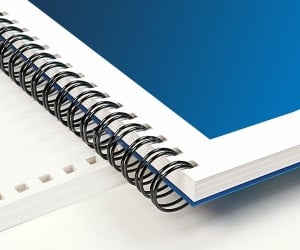
< Over the years, a number of customers have asked me whether they can use twin loop wire with their plastic comb binding machine. These customers often don’t want to have to buy a brand new machine but like the look and feel of twin loop wire binding. However, the answer to their question isn’t as simple as it seems. You see, they actually do make twin loop wire that is designed to work with the plastic comb binding hole pattern. With that said, if you want to use these wires you are going to need a way to close the wires. What is Spiral-O Wire? Let me explain a little bit more…There is a product that we carry called Spiral-O Wire. This wire has 19 loops and is designed to work with the hole pattern from a plastic comb binding machine. Spiral-O Wire is sometimes called Wire Combs or Ibico Wire and was originally designed for use with some of the older Ibico binding machines. A number of the older Ibico plastic comb binding machines also included a twin loop wire closer on the front of them to allow users to use both plastic combs and wire. This 19 loop wire was designed for this purpose. What Equipment is Needed? As the Ibico brand has been phased out by GBC and all of the older Ibico plastic binding machines have been replaced with new models, they no longer have the twin loop wire closer on the front of them. This presents a problem in trying to use these spiral-o wires since you can’t use the wires without a way to close them. One of the only options left is to purchase a Twin Loop wire closer. However, since twin loop wire closers are not incredibly cheap this option usually only appeals to users who have larger electric plastic comb binding machines. Otherwise, it is often advisable to simply buy a low end 3:1 pitch twin loop wire binding machine (the supplies are cheaper). This being said, if you have one of the older Ibico binding machines that has a wire closer included you are in luck. The Spiral-O binding supplies that we carry will work perfectly with your machine and you will be able to use both plastic combs and wire depending on your needs. These Spiral-O binding supplies are available in Black, Silver, White, Blue and Red and in sizes up to 1″ in diameter. If you aren’t sure what type of wire binding supplies that you need to work with your machine simply give us a call. Our trained sales representatives will be glad to help you find the correct supplies for use with your machine.(Read More)
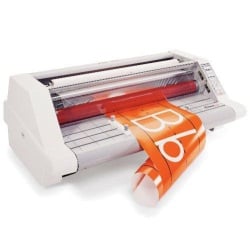

Loading...


